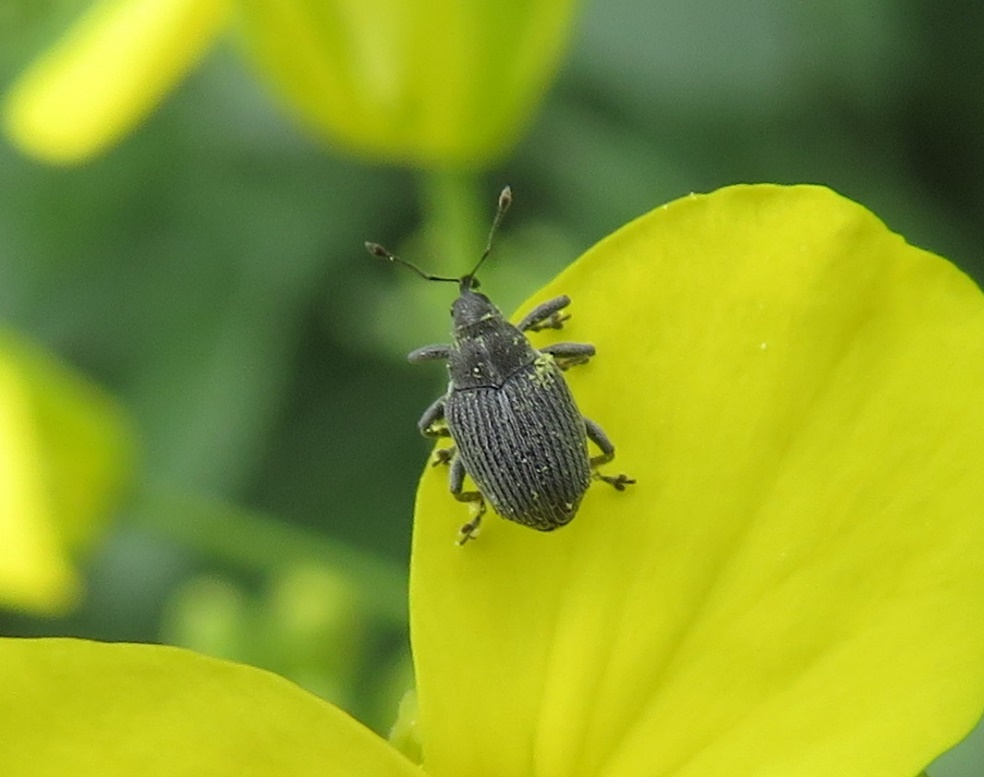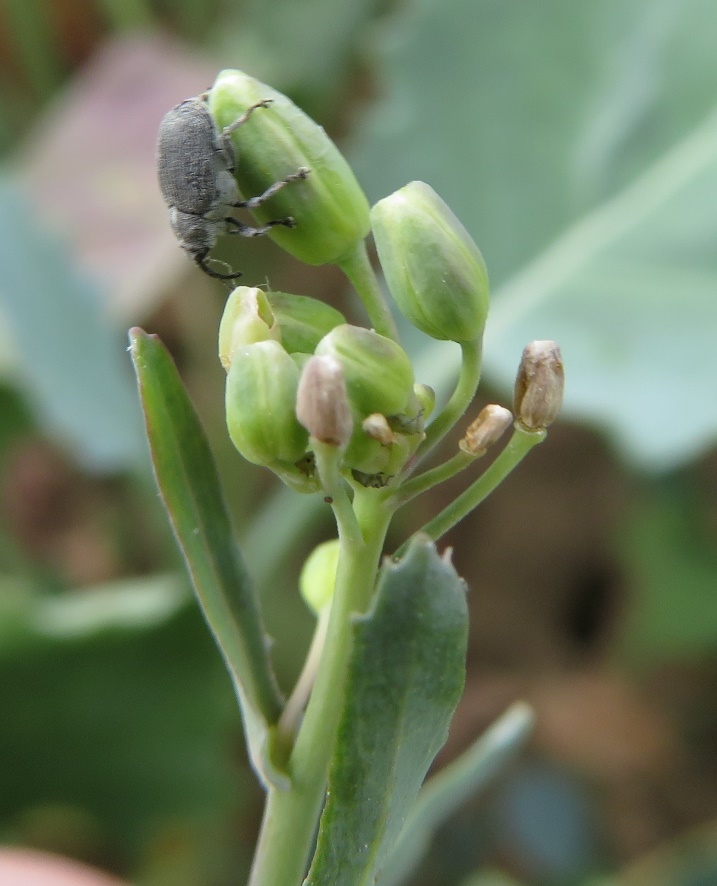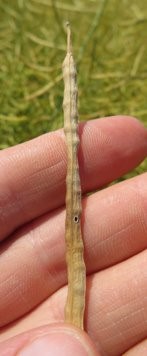Cabbage seedpod weevil is a pest of both spring and winter canola. High risk fields include the most advanced in an area and in areas that had a warm, open fall and mild winter.
Cabbage seedpod weevil (Ceutorhynchus obstrictus) adults feed on flower buds but economic damage is caused by larvae feeding on seeds inside pods and by shatter losses that result from holes made in pods when larvae exit them. Weevils can be managed with an insecticide application during early bloom stages of canola if the insect is at threshold. Monitor during flower bud formation through early pod development.
Identification
The adult cabbage seedpod weevil (Figure 1) is ash-grey to black in colour and approximately 4 mm (0.2 in.) in length. Like all weevils, it has a snout that resembles an elephant’s trunk. Adults are conspicuous and typically found on buds, flowers, and pods. The larvae are white, C-shaped and legless and can only be found within the pod.

Life Cycle
There is one generation per year. In the spring, adults emerge from their overwintering sites including shelterbelts, leaf litter, fencerows and ditch banks. Peak emergence occurs when soil temperatures are 15°C. These newly emerged adults feed on the canola crop and other host plants, including volunteer canola and mustard plants. After mating, the female lays her eggs, typically one per pod, directly into newly developing seedpods. They typically deposit one egg per pod. The larvae hatch within 1 week, depending on temperature, and each larva will consume 3–5 seeds during development. Once mature, the larvae mine out of the pod, drop to the ground and pupate in the soil. First generation adults emerge from the soil 10 days later to feed on cruciferous plants until it is time to enter their overwintering sites. The entire life cycle of the insect takes approximately 6–8 weeks. Host plants include the Brassicaceae (mustard) family (e.g., canola, broccoli and cauliflower) and weeds from the Brassica family (e.g., wild mustard, flixweed and stinkweed).
Scouting and Threshold
Monitor the adult population when the crop enters the bud stage until the end of flowering. Using a sweep net, take 10 sweeps (1 sweep = 180° arc) in at least 4 locations within the field and determine the average number of adults per 10 sweeps. Research in Western Canada has shown that sweeping in 4 areas of the field provides results similar to sweeping in 10 areas, which was the previous recommendation. Avoid sweeping at field edges and conduct sweeps on warm days between 11:00am and 5:00pm.
The threshold for chemical control is 25 to 40 weevils per 10 sweeps during early flowering stages.
Crop Damage
Overwintering adults may feed on flower buds which can result in blasting (Figure 2). Plants can typically compensate for adult feeding injury by producing more buds. Adult feeding may reduce yield potential if compensatory growth is compromised by dry conditions.
Economic damage is caused by larvae feeding on seeds inside the pods. Further losses result from shattering of pods, caused by damage to pod integrity when larvae bore through the pods to exit and drop to the soil surface (Figure 3).


Chemical Control
Application of insecticides registered for cabbage seedpod weevil control are warranted if the pest reaches the threshold of 25 to 40 per sweep. Apply insecticide at 10 to 20% bloom to prevent eggs from being laid in newly formed pods. Applying insecticides prior to early pod development may not prevent economic damage as the crop may be re-infested during pod development.
Spray very late in the evening or early in the morning when bees are less likely to be foraging in the crop. Contact local beekeepers at least 24 hours in advance so they can move their hives prior to spraying.
Insecticide options can be found on the Crop Protection Hub.